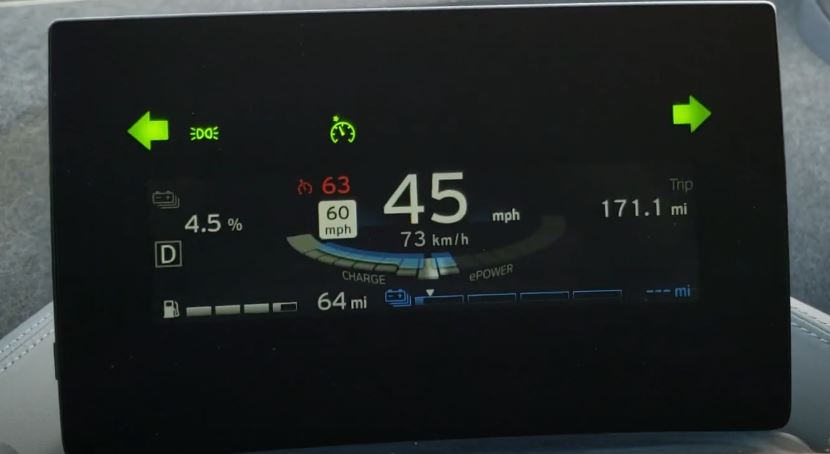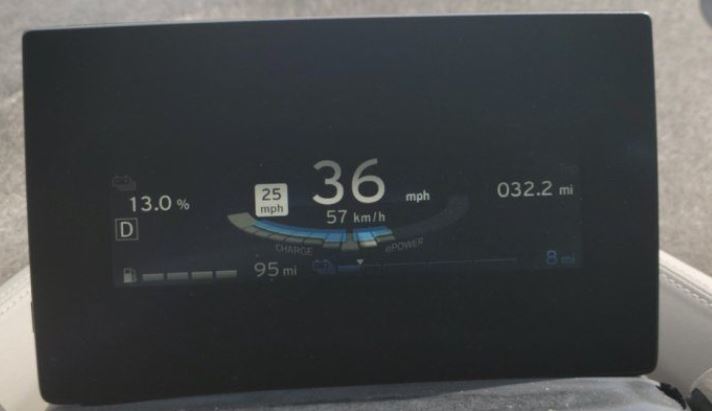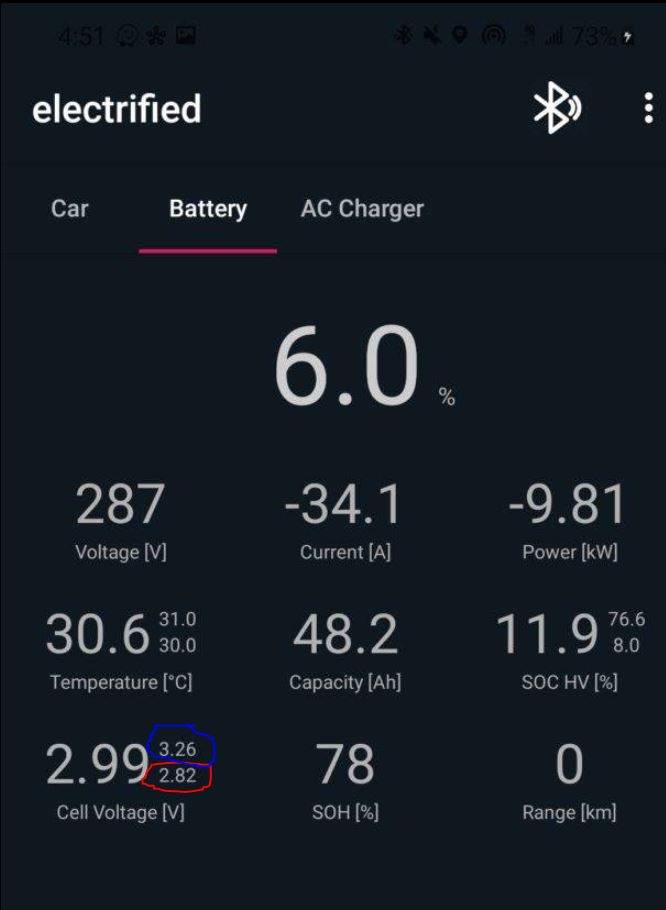Greeting All – Apologies for the longer post.
TLDR;
• 2014 i3 REX Losing Power between 9-13% SOC
• Software Fix was applied in 2019, Fixed temporarily, reduced range, problem is worse now in 2021.
• Possible to check Cell Voltage of each individual cell?
Back in June of 2019 I took my car (2014 REX - 52k miles) to the BMW Dealer to address the abrupt and almost complete power loss when the REX turns on and battery hits 4.5% - See figure 1. I showed them the BMW Service Bulletins on the issue and they agreed the software update should fix - and it did for about 6 months. I tested it well; I drove it at 80mph on the highway (when I know the REX can't keep up) and battery hit 2.5% and I still had full power bars. Fixed I said. Looks like the fix was short lived…
Link to what I showed them -> https://www.bmwblog.com/2017/04/17/bmw-address-issue-incorrect-state-charge-readings-i3/)
The software update BMW performed in June cost me $350 and was not covered under any warranty. It also cut my EV Range by 20% or so. Where before the GOM would show 90-100 miles (I would get 70-80 actual) post update GOM shows 70-80 (and I get 45-60 actual) - I wonder if my battery deteriorated further and BMS can't account for the loss? BMW official report said 74% capacity remaining/test passed back in June 2019 – That was 2.5 years ago and about 30k less - Electrify app says SOH is in the upper 70s - I'm guessing this is not that accurate or is it possible for battery health to be repaired?
Fast forward to today/end of 2021, I lose my power bars anywhere between 9% and 13% - Wayyyy before the REX even turns on. Luckily, I am coded for HSOC so I can manually turn on the REX and get home every time. See Figure 2.
What's the HV Battery voltage supposed to be when the REX kicks on? I go from full power bars to 1 or 2 when my HV Voltage drops to <300v. If it hits <280v all power bars are gone, regardless what the Battery % is. More importantly, see figure 3. Notice the big delta between Cell Voltages. The top and bottom number are usually with 0.01v of each other until I hit <18% SOC as displayed on the dash. Is there a way to get a readout of these voltages on all the cells/modules?
I’m suspecting more battery degradation – but I don’t want to pay more diag fees until I’m sure battery is bad.
Thoughts?
Figure 1

Figure 2

Figure 3

TLDR;
• 2014 i3 REX Losing Power between 9-13% SOC
• Software Fix was applied in 2019, Fixed temporarily, reduced range, problem is worse now in 2021.
• Possible to check Cell Voltage of each individual cell?
Back in June of 2019 I took my car (2014 REX - 52k miles) to the BMW Dealer to address the abrupt and almost complete power loss when the REX turns on and battery hits 4.5% - See figure 1. I showed them the BMW Service Bulletins on the issue and they agreed the software update should fix - and it did for about 6 months. I tested it well; I drove it at 80mph on the highway (when I know the REX can't keep up) and battery hit 2.5% and I still had full power bars. Fixed I said. Looks like the fix was short lived…
Link to what I showed them -> https://www.bmwblog.com/2017/04/17/bmw-address-issue-incorrect-state-charge-readings-i3/)
The software update BMW performed in June cost me $350 and was not covered under any warranty. It also cut my EV Range by 20% or so. Where before the GOM would show 90-100 miles (I would get 70-80 actual) post update GOM shows 70-80 (and I get 45-60 actual) - I wonder if my battery deteriorated further and BMS can't account for the loss? BMW official report said 74% capacity remaining/test passed back in June 2019 – That was 2.5 years ago and about 30k less - Electrify app says SOH is in the upper 70s - I'm guessing this is not that accurate or is it possible for battery health to be repaired?
Fast forward to today/end of 2021, I lose my power bars anywhere between 9% and 13% - Wayyyy before the REX even turns on. Luckily, I am coded for HSOC so I can manually turn on the REX and get home every time. See Figure 2.
What's the HV Battery voltage supposed to be when the REX kicks on? I go from full power bars to 1 or 2 when my HV Voltage drops to <300v. If it hits <280v all power bars are gone, regardless what the Battery % is. More importantly, see figure 3. Notice the big delta between Cell Voltages. The top and bottom number are usually with 0.01v of each other until I hit <18% SOC as displayed on the dash. Is there a way to get a readout of these voltages on all the cells/modules?
I’m suspecting more battery degradation – but I don’t want to pay more diag fees until I’m sure battery is bad.
Thoughts?
Figure 1

Figure 2

Figure 3

